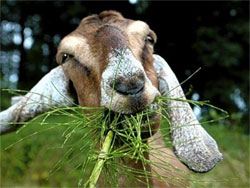As this year’s wildfire season comes to a close, states and insurance companies are grappling with a situation that each year threatens more people and severely strains budgets.
It’s pretty scary now to live in the west – the homes at risk from wildfires jumped 62% this year. 1.2 million homes are in high or very risk zones, adding up to over $189 billion in value, according to an analysis by CoreLogic.
Colorado and California experienced the most widespread fires ever. In August, 51 major uncontained wildfires raged across 10 western states with more than 19,000 firefighters actively fighting them. 5300 square miles of forest had burned in 32,000 fires by that time and after spending $1 billion, the Forest Service ran out of money to fight them.
Even if you don’t live in the West, this does effect you. Every taxpayer paid $1100 last year toward the $139 billion it cost to respond to extreme weather events, says the Natural Resources Defense Council (NRDC). That’s more than we spend on transportation or education.
And taxpayers are paying triple that of private insurers to help people recover from drought, storms, floods and wildfires.
What to do?
Part of the reason so many homes are in danger is because of the construction boom (that led to the crash) over the past two decades. Close to 17 million homes were built during that period, about half of them in rural, wildfire-prone areas.
Colorado homes are at the highest risk, followed by California and Texas.
Colorado’s Governor Hickenlooper formed the Fire Insurance and Forest Health Task Force, which concludes: local governments should rate outlying developments on wildfire risk and require homeowners to take preventive measures, such as clearing trees near their home. The insurance industry favors that approach along with more stringent building codes.
Other recommendations include:
- Charging fees on homes built in the woods.
- Rating the wildfire risk of the houses already built in burn zones on a 1-10 scale and informing insurers.
- Establishing a state building code for use of fire-resistant materials and defensible space.
- Requiring home sellers to disclose wildfire risks, just as they must disclose flood risks.
Some people are using goats to clear the underbrush that can fuel wildfires. They do just as good a job as other fire mitigation strategies, and it’s cheaper because it doesn’t involve human labor or chainsaws, says the Roxborough Fire Mitigation Committee in Colorado, which helped organize the work.

A California resident says letting goats graze around his house saved his home and ranch. Bay Area agencies and residents use goats to protect the last of their forest cover – much of which has been decimated by drought and bark beetles – from catching fire.
And it’s spawning new businesses like Hire-A-Goat, which rents out goats.
Threats to Health
The costs from wildfires extends far beyond the money to peoples’ health, notes NRDC. They studied the smoke from wildfires in 2011 and found the area affected by smoke is 50 times greater than that burned by fire.
That year, 22 states didn’t have wildfires but people in all but eight of them still experienced the smoke.
Incredibly, roughly two-thirds of the US – 212 million people – were effected. Besides soar throats and irritated eyes, exposure to smoke from wildfires provokes asthma attacks, pneumonia and can exacerbate chronic heart and lung disease.
There are hundreds of toxic compounds in wildfire smoke, says Patrick Kinney, who directs Columbia University’s Climate and Health Program. Very fine particulate matter is most concerning because tiny airborne particles go deep in the lungs and cause serious damage. In fact, the World Health Organization officially classified this particulate matter as a carcinogen this month.
Extensive research conclusively links the uptick and severity of wildfires with climate change. Climate change is fueling droughts that are projected to intensify across much of the US as a result of less rainfall and more evaporation, turning wild-land vegetation tinder-dry. It also is projected to fuel more frequent, longer lasting extreme heat and lengthen warm-weather seasons, reducing moisture and setting the stage for fire risks, says NRDC.
Read "Where There’s Fire, There’s Smoke":
